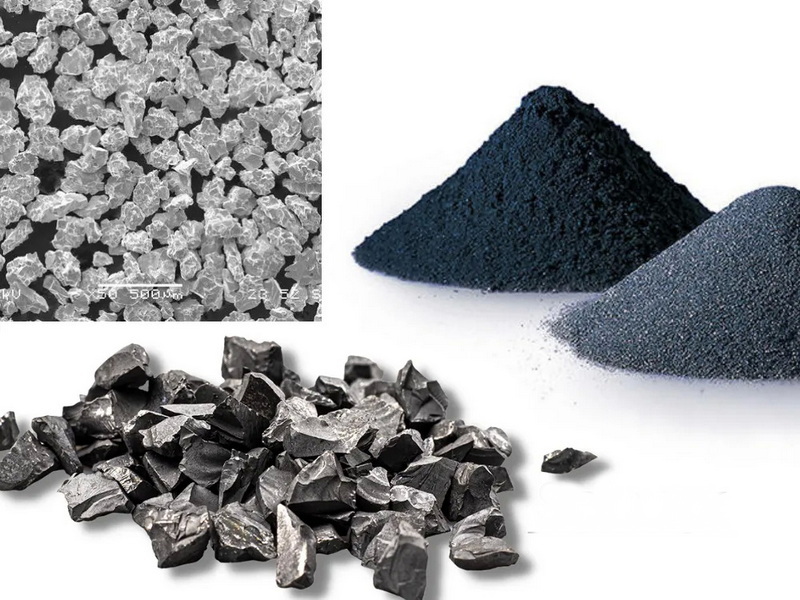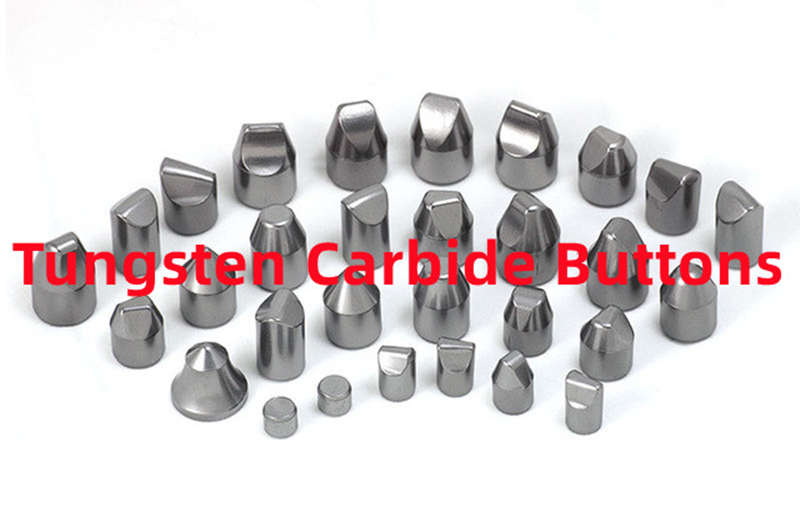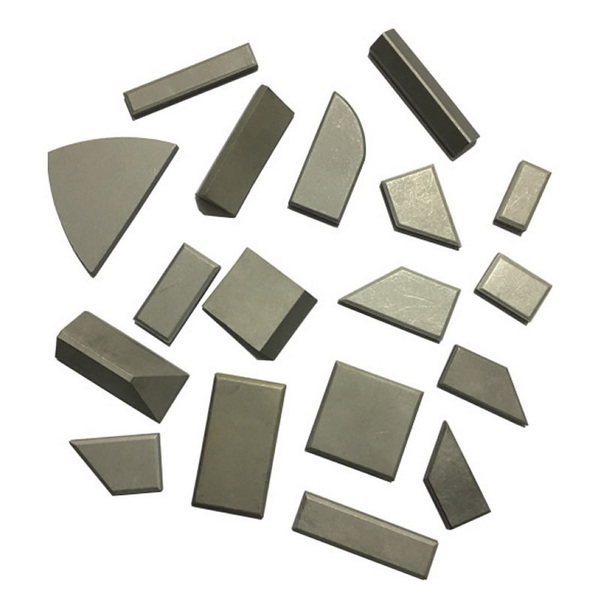Content Menu
● Introduction to Tungsten Carbide
>> Applications of Tungsten Carbide
● Methods for Applying Tungsten Carbide
>> 1. Thermal Spraying
>> 2. Spark Deposition
>> 3. Embedding
>> 4. Brazing
● Preparation and Post-Application Treatments
>> Preparation
>> Post-Application Treatments
● Advanced Techniques and Considerations
>> Laser Cladding
>> Environmental Considerations
>> Cost and Efficiency
● Conclusion
● FAQ
>> 1. What is the HVOF process used for applying tungsten carbide coatings?
>> 2. How does spark deposition apply tungsten carbide?
>> 3. What is the purpose of nickel coating tungsten carbide particles?
>> 4. Why is surface preparation important before applying tungsten carbide coatings?
>> 5. What are some common applications of tungsten carbide?
● Citations:
Tungsten carbide is renowned for its exceptional hardness and wear resistance, making it a crucial material in various industrial applications, including cutting tools, drilling machinery, and wear-resistant coatings. Applying tungsten carbide effectively requires understanding different methods and techniques, each suited to specific needs and materials. This article will delve into the processes of applying tungsten carbide, highlighting key methods such as thermal spraying, spark deposition, and embedding.

Introduction to Tungsten Carbide
Tungsten carbide is a composite material consisting of tungsten carbide particles bonded together by a metal matrix, typically cobalt. Its hardness and durability make it ideal for applications where high wear resistance is necessary. The process of applying tungsten carbide can vary significantly depending on the desired outcome and the substrate material.
Applications of Tungsten Carbide
Before discussing application methods, it's essential to understand the diverse uses of tungsten carbide:
- Cutting Tools: Tungsten carbide is widely used in cutting tools due to its hardness and ability to withstand high temperatures.
- Drilling Machinery: It is used in drilling bits for its wear resistance.
- Surgical Instruments: Tungsten carbide enhances the performance and durability of surgical tools.
- Jewelry: Its hardness and durability make it suitable for high-end jewelry.
- Aerospace Industry: Used in components requiring high strength and resistance to wear.
Methods for Applying Tungsten Carbide
1. Thermal Spraying
Thermal spraying is a common method for applying tungsten carbide coatings. This process involves heating the tungsten carbide particles to a high temperature and propelling them onto a substrate. The most effective thermal spraying technique for tungsten carbide is the High Velocity Oxy-Fuel (HVOF) process.
In the HVOF process, fuel gas and oxygen are combusted in a high-pressure chamber, reaching temperatures up to 5,600°F (3,093°C). The resulting hot gas is accelerated through a nozzle, where tungsten carbide powder is injected. The particles mix with the gas and are propelled at supersonic speeds onto the substrate, forming a dense and wear-resistant coating.
2. Spark Deposition
Spark deposition is another method used to apply tungsten carbide, particularly in die casting applications. This process involves depositing tungsten carbide onto a metal surface using electrical sparks. The Rocklinizer is a device that uses this method to impregnate tungsten carbide into metal surfaces without generating significant heat, thus preserving the temper of the workpiece.
3. Embedding
Embedding tungsten carbide particles into a weld pool is a technique used to enhance the wear resistance of specific areas on a workpiece. This method involves directing tungsten carbide particles into the molten weld puddle during welding. The particles are typically aimed at the last half of the puddle to ensure they are fully incorporated into the weld.
4. Brazing
Brazing is a method where nickel-coated tungsten carbide particles are applied to a workpiece and then heated to melt the brazing material, securing the particles in place. This method is effective because the nickel coating makes the tungsten carbide particles wettable, allowing them to adhere well to the workpiece.

Preparation and Post-Application Treatments
Preparation
Before applying tungsten carbide coatings, the substrate surface must be prepared to ensure good adhesion. This often involves cleaning and roughening the surface. Shot blasting with TiB2 particles can improve surface coarseness and compressive residual stresses, enhancing the bonding between the coating and the substrate.
Post-Application Treatments
After applying the coating, additional treatments may be necessary. For example, grinding with diamond wheels can refine the coating surface, reducing porosity and improving microhardness. Sealing with epoxy resin can further reduce porosity and enhance corrosion resistance.
Advanced Techniques and Considerations
Laser Cladding
Laser cladding is a modern technique that involves using a high-powered laser to melt and fuse tungsten carbide particles onto a substrate. This method offers precise control over the coating thickness and composition, making it ideal for complex geometries and high-precision applications.
Environmental Considerations
The application of tungsten carbide coatings should also consider environmental factors. For instance, the HVOF process generates noise and requires proper ventilation to manage fumes. Additionally, the disposal of tungsten carbide waste must adhere to environmental regulations to prevent pollution.
Cost and Efficiency
The cost-effectiveness of applying tungsten carbide coatings depends on the method and scale of application. While thermal spraying is efficient for large-scale operations, laser cladding may be more cost-effective for small, precision applications.
Conclusion
Applying tungsten carbide effectively requires careful consideration of the application method, substrate preparation, and post-application treatments. Whether through thermal spraying, spark deposition, embedding, or brazing, each technique offers unique advantages suited to different applications. Understanding these processes is crucial for maximizing the benefits of tungsten carbide's exceptional hardness and wear resistance.

FAQ
1. What is the HVOF process used for applying tungsten carbide coatings?
The HVOF process involves combusting fuel gas and oxygen to propel tungsten carbide particles at high velocities onto a substrate, creating a dense and wear-resistant coating.
2. How does spark deposition apply tungsten carbide?
Spark deposition uses electrical sparks to impregnate tungsten carbide into metal surfaces without generating significant heat, preserving the workpiece's temper.
3. What is the purpose of nickel coating tungsten carbide particles?
Nickel coating makes tungsten carbide particles wettable, allowing them to adhere well to a workpiece during brazing or welding processes.
4. Why is surface preparation important before applying tungsten carbide coatings?
Surface preparation, such as shot blasting, improves surface coarseness and residual stresses, enhancing the adhesion between the coating and the substrate.
5. What are some common applications of tungsten carbide?
Tungsten carbide is used in cutting tools, drilling machinery, surgical instruments, jewelry, and the aerospace industry due to its hardness and wear resistance.
Citations:
[1] https://www.thermalspray.com/preparation-tips-for-tungsten-carbide-coatings/
[2] https://www.asbindustries.com/coating-materials/carbide-coating-materials/tungsten-carbide-coatings
[3] https://patents.google.com/patent/US3049435A/en
[4] https://rocklinmanufacturing.com/resources/files/yr/2020/Die_Casting_Engineer_Editorial_-_Sept_2020.pdf
[5] https://www.tungco.com/insights/blog/5-tungsten-carbide-applications/
[6] https://www.youtube.com/watch?v=7O6bE6HyH0w
[7] https://www.hardfacetechnologies.com/zh/equipment/tungsten-carbide-embedding-system-operations-manual-2
[8] https://eurobalt.net/blog/2022/03/28/all-the-applications-of-tungsten-carbide/
















